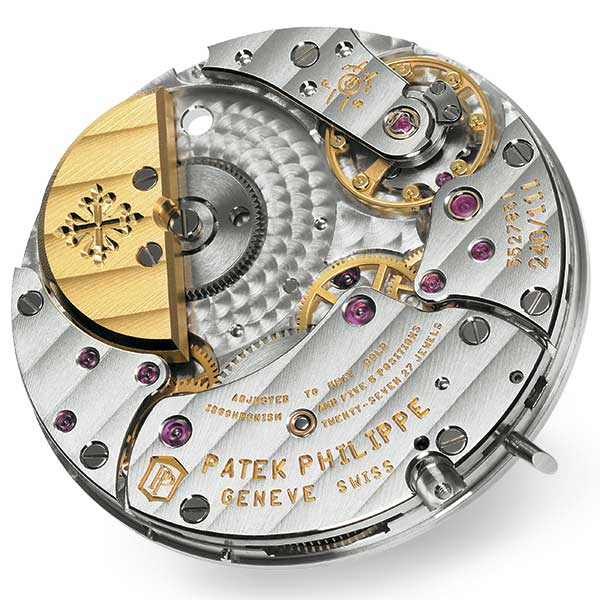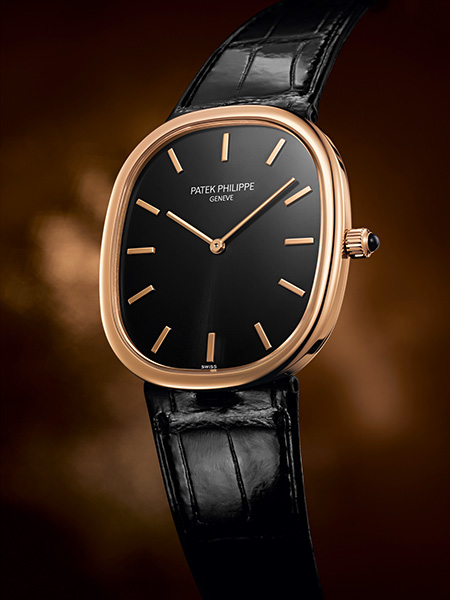Mr Henri and Philippe Stern were determined to create a movement that was slender, elegant, robust and reliable. At a time when other manufacturers were producing quartz movements in droves the Stern family decided to keep things a little more traditional (however, Patek did co-develop the Beta 21).
The first hurdle to cross when developing the 240 was making it slender, with the solution being a micro-rotor. Micro-rotors were already on the market at this point, but were not commonplace. Patek utilized a small off-set winding rotor that was recessed into the mainplate, thus removing a huge portion of height that would have been given to automatic work. Due to the small nature of the rotor a heavier metal needed to be used so the rotor can gain enough momentum to wind the mainspring. The decision was to use 22 karat gold, keeping the rotor compact yet dense.

Friction is the enemy of watchmaking, it causes losses in power and undue stress on components. Patek uses unidirectional winding, meaning the mainspring only winds when the rotor turns one way, this means certain wheels, such as the reversing wheels, can be done away with, thus reducing overall friction.
Another way friction was reduced is via polished train wheel teeth. If the sections of the teeth that mesh with pinions are polished to a high standard the friction is considerably less than if they were left unfinished. They have also been optimized by engineering the geometry to improve the overall performance of the watch. How exactly this is achieved has not been stated.

In an age where most watches operate at a frequency of 28,800 VPH Patek have kept the calibre 240 running at 21,600 which in turn reduces the energy consumption of the movement. This move hasn’t affected their accuracy in any way as they all function to chronometer specs.
The 240 we see today is still the model we saw 40 years ago, with a few upgrades. They are now using a Silinvar® balance spring, which is essentially silicon, an antimagnetic material with many other benefits. In 2011, the Patek Philippe Advanced Reseach department has used the same technology in the escapement, for a limited edition (Ref. 5550P), constructing the pallet fork and escape wheel from Silinvar®. This further improves isochronism and accuracy.

The result of all the above features is a power reserve of 70 hours, as opposed to 48 when it was first introduced.
The 240’s versatility doesn't stop there. Since its introduction it has been used as the base movement for a perpetual calendar, a world time complication, an astronomical watch featuring a sky chart and phases of the moon, and a decoratively engraved skeletonized version of itself.
The calibre 240 can truly be called a proven workhorse of watchmaking, a workhorse that has all the features of a prize winning thoroughbred.





